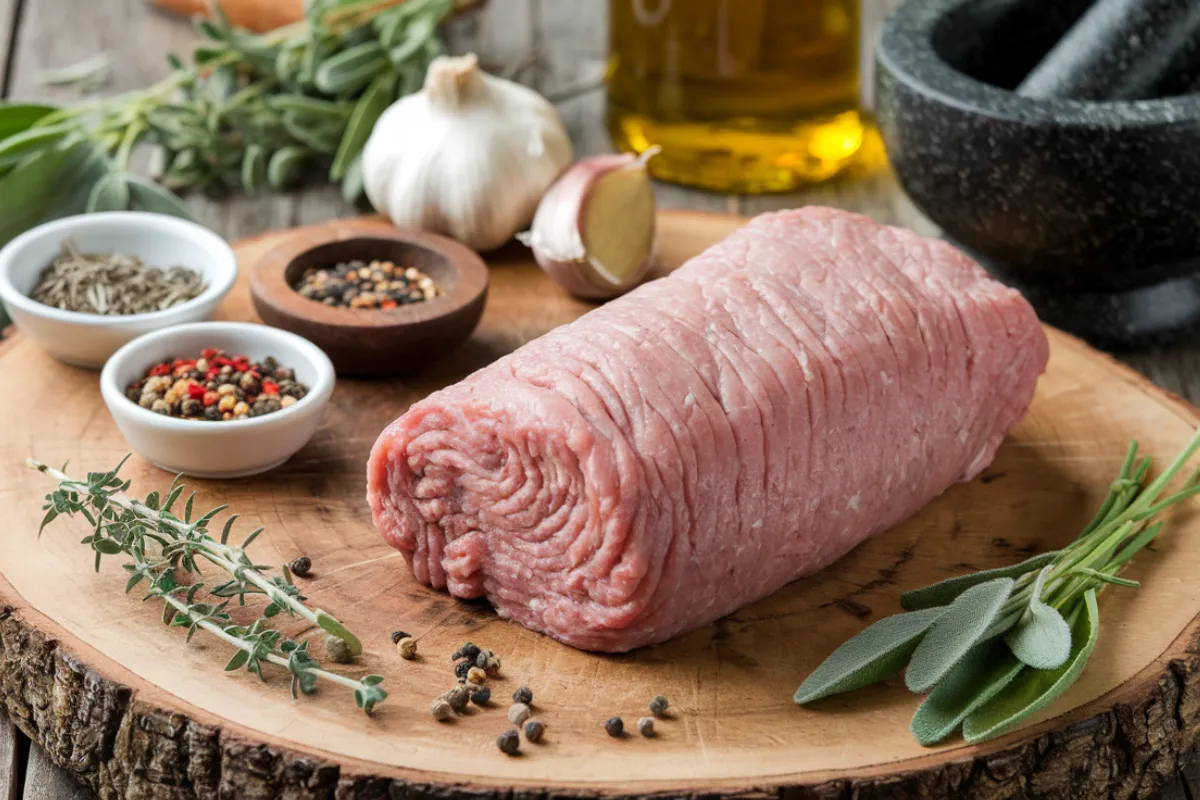Turkey sausage is a popular alternative to traditional pork sausage, offering a unique flavor profile that appeals to health-conscious consumers and those seeking variety in their diet. While many are familiar with pork sausage, turkey sausage’s taste is often a subject of curiosity. This article delves into what turkey sausage tastes like, its origins, nutritional benefits, and how it compares to its pork counterpart.
The Origins of Turkey Sausage
A Brief History
Turkey sausage has gained popularity over the years, particularly as a healthier alternative to pork sausage. The idea of using turkey as a substitute for red meat emerged as early as the 1980s when the National Turkey Federation introduced turkey sausage to the American market. The timing was perfect, as the public was becoming increasingly aware of the health risks associated with consuming too much red meat.
The Rise in Popularity
The rise in turkey sausage’s popularity was fueled by a growing demand for healthier food options. As people became more conscious of their dietary choices, turkey sausage offered a leaner, lower-fat option that still delivered on flavor. Over the years, it has become a staple in American households, particularly among those looking to improve their diet without sacrificing taste.
Nutritional Profile of Turkey Sausage
Comparing Turkey and Pork Sausage
When comparing turkey sausage to other types of sausage, especially pork sausage, it becomes clear why many health-conscious individuals opt for turkey. Here’s a breakdown of how turkey sausage stacks up against its pork counterpart:
- Calories: Turkey sausage generally has fewer calories per serving compared to pork sausage. This makes it a great option for those looking to reduce their caloric intake while still enjoying a satisfying meal.
- Fat: One of the most significant differences between turkey and pork sausage is the fat content. Turkey sausage is much lower in fat, particularly saturated fat, which is linked to heart disease. This lower fat content makes turkey sausage a better choice for those monitoring their fat intake.
- Cholesterol: Turkey sausage also contains less cholesterol than pork sausage, making it a heart-healthy option.
- Protein: Despite being lower in fat and calories, turkey sausage still provides a good amount of protein, essential for muscle maintenance and overall health.
Nutritional Benefits of Turkey Sausage
Turkey sausage’s nutritional profile makes it suitable for health-conscious consumers, offering a balanced option that fits into a variety of diets. It is particularly appealing for those on weight management plans or those looking to reduce their intake of red meat while still enjoying flavorful meals.
The Flavor Profile of Turkey Sausage
Spices and Herbs Used in Turkey Sausage
The flavor of turkey sausage is largely defined by the spices and herbs used in its preparation. Common spices include:

- Sage
- Thyme
- Black pepper
These spices create a balanced flavor that is savory, slightly sweet, and sometimes smoky. The use of herbs like sage and thyme gives turkey sausage a distinct, earthy taste that sets it apart from other sausages.
Differences in Flavor Compared to Pork Sausage
Turkey sausage has a milder, more herbaceous flavor compared to pork sausage, which is known for its rich, robust taste. While pork sausage tends to be more savory and fatty, turkey sausage is lighter and often carries more of the spices used in its preparation. This difference in flavor makes turkey sausage a versatile ingredient that can be used in a variety of dishes without overpowering the other flavors.
Different Types of Turkey Sausage
Turkey Sausage Links
Turkey sausage links are often used in breakfast dishes or as a protein component in meals. They can be seasoned in various ways, from mild to spicy. The casing around the sausage links helps retain moisture, giving them a juicy texture that complements their mild flavor.
Turkey Sausage Patties
Similar to links, turkey sausage patties are commonly used in breakfast dishes. They are often seasoned with herbs and spices, making them a flavorful addition to sandwiches or as a side dish. The flat shape of patties allows them to cook quickly and evenly, making them a convenient option for busy mornings.
Ground Turkey Sausage
Ground turkey sausage is versatile and can be used in a variety of dishes, such as casseroles, meatballs, or stuffing. It is often seasoned with Italian spices or other flavorings to suit the dish it’s being used in. Ground turkey sausage offers the same health benefits as other forms but with added versatility in the kitchen.
Flavor Variations of Turkey Sausage
Turkey sausage is available in different flavor variations, including Italian, spicy, and smoked. These variations offer a range of taste experiences:
- Italian Turkey Sausage: Often seasoned with fennel, garlic, and red pepper flakes, this variety mimics the flavors of traditional Italian pork sausage.
- Spicy Turkey Sausage: Packed with heat from chili peppers and other spices, spicy turkey sausage is perfect for those who enjoy a bit of a kick in their meals.
- Smoked Turkey Sausage: The smoking process imparts a rich, smoky flavor that enhances the natural taste of the turkey and spices.
Cooking Methods and Their Impact on Flavor
Grilling Turkey Sausage
Grilling is a popular cooking method for turkey sausage as it enhances the flavor by creating a crispy exterior while maintaining juiciness inside. The grilling process allows the spices and herbs to caramelize, deepening the overall flavor profile. Grilled turkey sausage pairs well with grilled vegetables or as part of a barbecue spread.
Baking and Roasting Turkey Sausage
Baking is a healthier cooking method that evenly cooks the sausage while retaining moisture. This method is particularly effective when combined with vegetables, as the sausage can absorb the flavors of the vegetables while also contributing to the overall dish. Roasted turkey sausage is perfect for casseroles, sheet pan dinners, or as a protein-packed addition to salads.
Pan-Frying Turkey Sausage
Pan-frying is a quick and convenient method for cooking turkey sausage. This technique adds a golden crust to the sausage, enhancing its flavor through caramelization. Pan-fried turkey sausage is ideal for breakfast dishes, such as omelets or breakfast sandwiches, where a little extra texture and flavor can make a big difference.
Boiling Turkey Sausage
Another method to cook turkey sausage, particularly for recipes like soups or stews, is boiling. This technique ensures the sausage remains moist and tender, making it an excellent choice for those who prefer a softer texture.
Common Misconceptions About Turkey Sausage
Blandness Myth
One common misconception is that turkey sausage is bland compared to pork sausage. While turkey sausage has a milder flavor, the right combination of spices and herbs can make it just as flavorful, if not more so. The key is in the seasoning, which can be adjusted to suit personal preferences.
Dryness Myth
Another belief is that turkey sausage is dry. While it is leaner than pork sausage, proper cooking methods, such as not overcooking, can ensure that turkey sausage remains juicy and tender. Additionally, adding moisture-rich ingredients, such as onions or bell peppers, during cooking can enhance its juiciness.
Pairing Turkey Sausage with Other Foods
Breakfast Dishes

Turkey sausage is a versatile ingredient that works well in many breakfast dishes:
- Omelets: Add turkey sausage to an omelet for a protein-packed start to your day.
- Frittatas: Turkey sausage pairs well with vegetables and cheese in a frittata.
- Breakfast Sandwiches: Use turkey sausage patties in a breakfast sandwich for a healthier alternative to traditional sausage.
Lunch and Dinner Recipes
Turkey sausage can be incorporated into a variety of lunch and dinner recipes:
- Casseroles: Turkey sausage adds flavor and protein to casseroles, making them more satisfying and nutritious.
- Stir-Fries: Ground turkey sausage can be used in stir-fries, adding a savory element to the dish.
- Pizza Toppings: Spicy or Italian turkey sausage makes for a delicious and healthier pizza topping.
Creative and Innovative Uses
Beyond traditional uses, turkey sausage can be incorporated into more creative dishes:
- Meatloaf: Substitute turkey sausage for ground beef in meatloaf for a leaner option.
- Stuffed Peppers: Use turkey sausage as a filling for stuffed peppers, combined with rice, vegetables, and cheese.
- Healthy Pizza Topping: For a unique twist, use turkey sausage as a healthier pizza topping, paired with a variety of vegetables and a light cheese.
Turkey Sausage vs. Pork Sausage
Health Considerations
When comparing the health benefits of turkey sausage and pork sausage:
- Lower Fat Content: Turkey sausage has a lower fat content, making it a better option for those monitoring their fat intake.
- Fewer Calories: Turkey sausage is also lower in calories, which can be beneficial for weight management.
- Heart Health: The lower cholesterol content in turkey sausage makes it a heart-healthier choice.
Taste Preference
Taste is subjective, and while some may prefer the richer, more robust flavor of pork sausage, others might enjoy the lighter, milder taste of turkey sausage. The spices and herbs used in turkey sausage can also be tailored to individual preferences, making it a versatile option for a wide range of dishes.
FAQs About Turkey Sausage
What Does Turkey Sausage Taste Like Compared to Pork Sausage?
Turkey sausage has a milder, more herbaceous flavor compared to the richer, more robust taste of pork sausage.
Is Turkey Sausage Always Healthier Than Pork Sausage?
Generally, turkey sausage is lower in fat and calories, making it a healthier choice, but this can vary depending on the brand and preparation method.
Can Turkey Sausage Be Used in the Same Recipes as Pork Sausage?
Yes, turkey sausage can be substituted for pork sausage in most recipes, though the flavor and texture may differ slightly.
Does Turkey Sausage Contain Preservatives?
Some brands of turkey sausage may contain preservatives, so it’s essential to check the label if this is a concern.
Is Turkey Sausage Gluten-Free?
Most turkey sausages are gluten-free, but it’s always important to read the packaging to ensure there are no added gluten-containing ingredients.
Conclusion
Turkey sausage offers a unique and versatile flavor profile that appeals to both health-conscious consumers and those looking for something different from traditional pork sausage. With its lower fat and calorie content, turkey sausage is a nutritious option that doesn’t compromise on taste. Whether grilled, baked, or pan-fried, turkey sausage can be a delicious addition to a variety of dishes. By exploring the different types of turkey sausage and pairing it with complementary foods, you can enjoy a flavorful and healthy alternative to pork sausage. For more healthy recipes and culinary inspiration, be sure to visit our homepage at Cheery Recipes.
Related Articles
- Turkey Club Wrap: Discover how to use turkey sausage in a delicious and healthy Turkey Club Wrap, perfect for lunch or dinner.
- Turkey Sausage Gravy Recipe: Learn how to make a rich and flavorful gravy using turkey sausage, ideal for topping biscuits or mashed potatoes.

